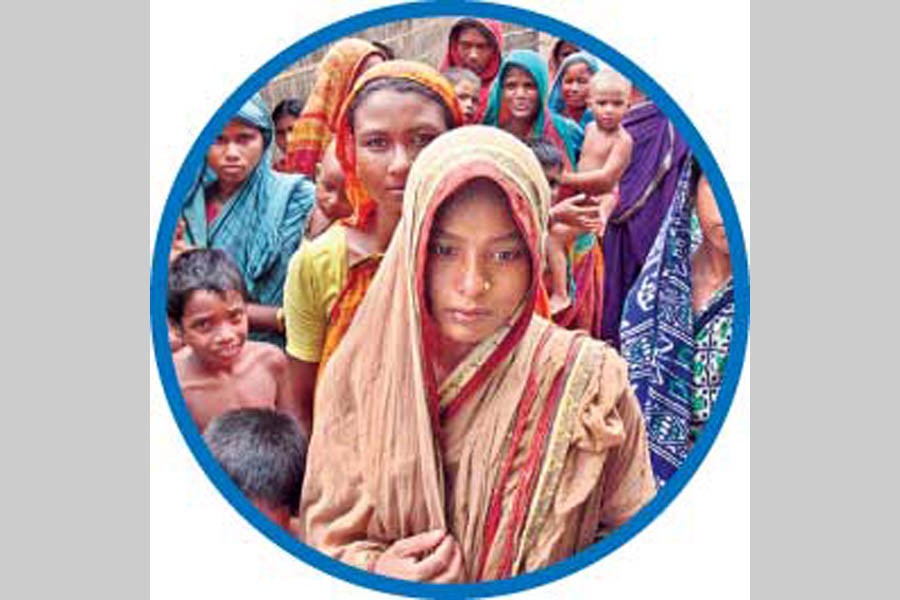On the face of it, the 1.3 percentage point drop of poverty from 21.8 per cent in the financial year (FY) 2017-18 to 20.5 per cent in 2018-19 may be considered an icing on the cake. This is so because the country has already improved its human development index (HDI) ranking by one slot and its gross domestic product (GDP) growth has broken the eight per cent barrier at 8.15 per cent for the first time. The GDP growth rate is incidentally the fastest in the Asia-Pacific region. The overall poverty reduction has duly been complemented by decrease in extreme poverty rate from 11.3 in the FY 2018 to 10.5 per cent in the FY 2019. If the annual poverty reduction takes place at this rate, roughly another 10 years will be required to eliminate this curse from this land.
Whether this simple arithmetic will be at work unerringly is, however, difficult to predict. The United Nations Development Programme (UNDP), financial organisations and experts from home and abroad are of the considered view that Bangladesh's development is not on the right course. Socio-economic polarisation is widening because the rich are becoming increasingly richer and the trickle-down benefit of economic growth to the lowest segment of society is too little to effectively help reduce poverty. Unless, this maldistribution of wealth is rationalised, societal stability may be in jeopardy, some have rightly cautioned.
The problem seems to lie with the poverty threshold as fixed by the World Bank in 2015. According to it, the earning of a family of three or four has to be $1.90 a day at the minimum to stay above the poverty line. By this measure, the United Nations measured that about 734 million remained in absolute poverty globally at that time. A year later in 2016, Bangladesh's poverty rate came down to 25.3 per cent from 40 per cent in 2005 (2016-17 Household Income and Expenditure Survey).
Now the income level fixed at $ 1.90 a day is just the bare minimum. This level of income cannot provide for more than subsistence living. People who earn an income like this are unlikely to have back-up assets and with increase in the number of children, such families get further weakened financially. In today's Bangladesh, a slackened emphasis on keeping family size small at the lower level of society has worsened the situation. Consequently, children from poor families are more discriminated against than their peers in terms of schooling. Manifestly, this is the missing link of the widening inequality.
Otherwise, the wealth distribution at the disposal of the lowest and highest 10 per cent of people until 2013, as official estimates show, favoured Bangladesh to narrow down the inequality. Until that period, the lowest 10 per cent of population had 4.0 per cent of national income in their hands whereas the highest 10 per cent of people had at their disposal 32.85 per cent of the total national income. If the figures are correct - not manufactured, the severity of inequality in the country should not have been a cause of serious concern now.
When worldwide, just one per cent of people possess about 99 per cent of global wealth, Bangladesh was well placed until 2013 to carry forward its mission of bridging the gap. What the extraordinary has happened then that experts have set the alarm bell ringing? That the country's GDP growth at a sustainably high rate over the decades has improved many of its social indicators is indisputable. But perhaps the share of the upper echelon in the wealth accumulation has gone by leaps and bounds, whereas the lower rungs have narrowly escaped the poverty trap or just been able to improve their economic status only slightly.
This may explain the widening inequality in income and wealth accumulation. With the concentration of major industries and businesses to a few urban centres, even regional disparities are becoming a major concern. Instead of decentralisation of administration and business hubs, the tendency of centralisation has led to disparities on a larger scale.
Reduction of poverty at the threshold stage may improve statistical readings but in effect it will not contribute much to the human development of the millions below the lower half of the population. Socio-economic progress of the privileged class does in no way guarantee transition of the entire population from the undesirable living standard. There is a need for rationalising employment and income. Tax for the rich and superrich should be levied at a higher rate in order to collect fund for social development programmes.
Sadly, the National Board of Revenue (NBR) each year fails to achieve its revenue target. This year also, according to its own admission, many tax identification number (TIN) holders did not pay taxes. What is surprising is that for years a manufacturer of jarda (spice of betel leaf) has remained the number one tax-payer in the country. This is proof enough that things are not all well on the income generation front of the government.
No one suggests that the country became a welfare state. But at least it should aspire to deliver rational and just dispensation for the lowly in society. At its current level of economic achievement, this is possible if social development programmes are justifiably reviewed.


